With today’s digital magazine development software and digital design tools, you can start a new online magazine in a matter of weeks. Even better, depending on your skills and experience, you could launch a digital magazine for less than $200. This guide teaches you how to create a digital magazine and launch it with ease.
Here are the seven steps you need to master to create and launch a digital magazine successfully.
1. Develop Your Digital Magazine Business Plan
The first step in creating a digital magazine is to develop a business plan. You need to decide who your publication will serve, how you plan to make money, and establish a budget for magazine launch and management costs.
Selecting a Niche for Your Digital Magazine
If you take a look at any newsstand for traditional print magazines, you’ll notice that there are many different types of magazines on the market. Since digital magazines don’t incur the high printing costs of their physical counterparts, there are even more categories and subcategories for digital magazines. These subcategories are known as niches, which is the group of people with shared interests to which your magazine will appeal.
When selecting your niche, it’s essential to do your research. Look for both traditional and digital magazines on the market that serve the audience you’re targeting. Review competing magazines for what you like and don’t like about them, as this information will prove invaluable as you develop your magazine.
If you can’t find magazines in the niche you intend to pursue, then look for websites, books, or other sources that appeal to the niche. If you find plenty of evidence that others are successfully reaching your niche in various ways, then you may have a viable niche to pursue. If online content directed to your niche is sparse, there may not be a sufficient audience to support your selected niche. If that happens, it’s best to either change or expand the audience you intend to target.
Selecting a viable niche that’s relevant to a small yet adequate group is a key to launching a successful digital magazine. If your magazine’s audience is too broad, you run the risk of no one feeling like the magazine speaks to them. If your niche is too narrow, you’ll have a hard time getting enough readers for your magazine to make it profitable.
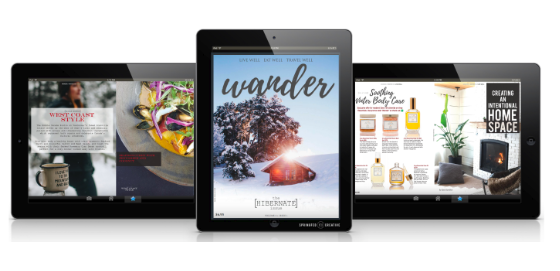
Wander digital magazine published by Springfed Creative Inc. targets the travel niche
Decide How Your Digital Publication Will Make Money
If your goal is to make money with your magazine, then you have many different monetization models available to you. Many digital magazine publishers use multiple sales channels to generate income from their magazines.
Here are a few of the ways you can sell your digital magazine:
- Sell your digital magazine on your website using a popular ecommerce plugin such as WooCommerce
- Generate sales for your magazine through mobile app stores, including Apple’s App Store and Google Play
- Create an online store through Shopify and sell single copies or subscriptions to your magazine
- List your digital magazine on online magazine newsstands and apps, such as Issuu and Magzter, Zinnio
You can also make money by selling advertisements on your digital magazine. Another way to monetize your online magazine is through sponsored posts, where you are paid to create content that features a certain product, brand, or person.
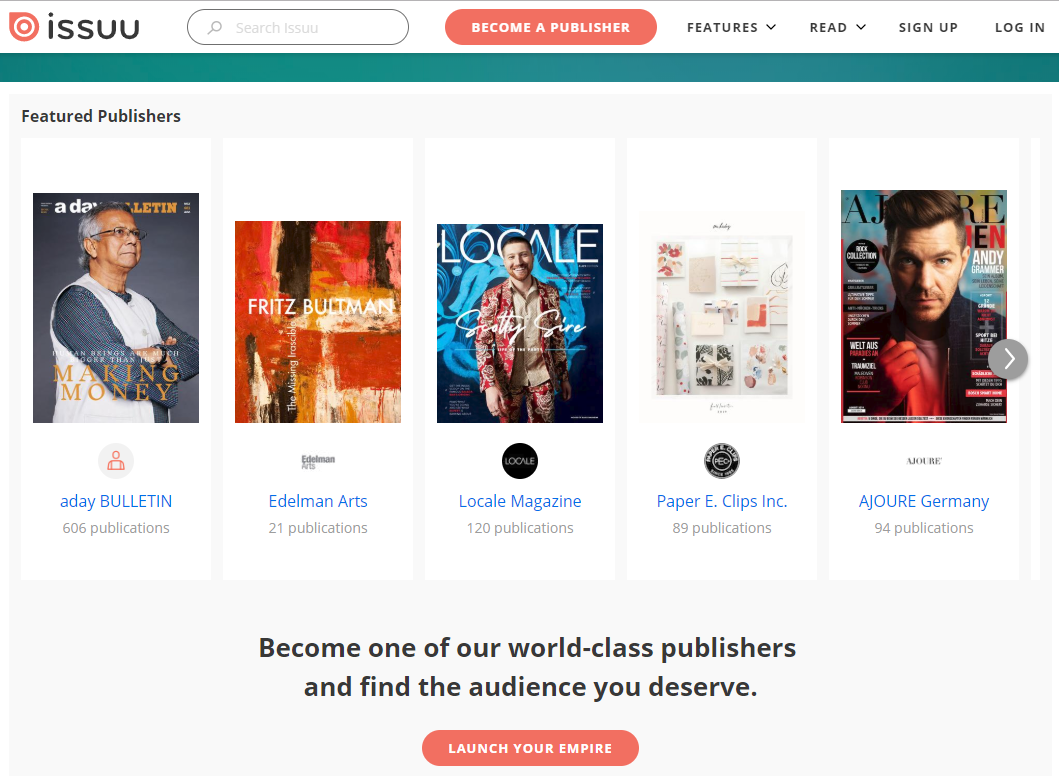
More than 15,000 digital publications are downloaded daily on Issuu
Digital Magazine Costs
You can create a digital magazine on a shoestring budget, or you can invest hundreds of thousands in developing and launching an online magazine. The choice is yours. No matter what type of magazine you’re creating, you’ll need to understand the types of activities required to develop and market an online magazine.
If you were to hire full-time employees for your magazine, including editors, writers, proofreaders, photographers, circulation managers, and more, you could spend hundreds of thousands of dollars easily to launch your digital magazine. Most new magazine publishers perform multiple roles themselves so that they do not have to incur these high staffing expenses.
You can reduce or even eliminate employee costs in other ways. You can find guest writers and photographers who are willing to provide content for free in exchange for publicity for their work. Also, nearly all digital magazines work with freelancers for their content development needs. You can find low-cost, high-quality freelancers for most of your magazine needs on sites like Fiverr and Upwork.
Non-staffing Costs Related to Launching a Digital Publication
Costs | |
|---|---|
Computers, Phones, Software, and Other Technology | $0 to $1500+ per employee |
Graphic Design & Page Layout Tools | $0 to $1000+ |
Image Editing Tools | $0 to $800+ |
Website Development and Hosting | $0 to $3,000 Plus for Launch* |
Digital Magazine Publishing Software | $0 to $999 or more each month |
If you’re on a shoestring budget, you can rely on the computers and technical devices you already own to create your first digital magazine. There are also several free online tools you can use. For example, Canva and PicMonkey offer free plans for image editing. You can get free photos for your magazine by taking them yourself or using free stock photos from sites like Pexels, Unsplash, and Pixabay.
Most magazine publishers create a website to promote their digital publications. You can launch a WordPress website with DreamHost for only $2.59 a month.
The more tasks you can do yourself or affordably outsource, the more you’ll save. If you’re diligent about securing free and low-cost resources to produce your magazine, you could launch the first issue of your magazine for $200 or less.
“My best advice for anyone who wants to start a digital magazine is to make sure you are fully capitalized, such as at least six months of expenses in the bank. It’s a marathon and not a sprint, and it’s hard to monetize a magazine based off of [Google Ads] and sponsored posts. The six-month runway will allow you to get your bearings while working out the kinks as you grow your audience.”
―Tom La Vecchia, Founder, X Factor Media and New Theory Magazine and Podcast
2. Build Your Digital Magazine Team
Very few successful magazines are started and sustained by a single person; you need a team that can help you create compelling, visually appealing content. As discussed above, that team can consist of full-time staff, volunteers, or freelancers.
Here are typical roles that you’ll see in the digital magazine world.
Typical Magazine Staff and What They Do
Role | What They Do |
|---|---|
Editor-in-Chief | Manages the overall direction and creation of the magazine |
Managing Editor | Manages the editorial planning and execution process |
Advertising Salesperson | Generates advertisers and sponsored posts for the magazine |
Marketing Director | Directs activities aimed at marketing the magazine, including managing the website, PR, social media, and more |
Circulation Director | Grows the magazine’s subscriber base and maintains positive relationships with subscribers |
Art Director | Responsible for magazine overall design and issue-by-issue layout |
Writers | Create magazine content |
Photographers | Responsible for all magazine photography |
Copy Editor | Makes sure all content is well-written and on-target for the audience; usually manages writer assignments |
Proofreader | Ensures magazine content is error-free |
While new magazine owners typically take on several roles when first starting out, it’s unwise to do everything yourself. Unlike a blog, magazine readers expect to hear from different contributors in each issue. That’s why it’s smart to have many writers on your editorial team, even if most or all are volunteers.
3. Select Your Digital Magazine Software
In deciding how to create a digital magazine, you’ll probably want to use a software platform to make creating your magazine a whole lot easier. It pays to take your time in selecting the right software for your needs.
Digital magazine software programs perform a variety of functions, including helping you set up your magazine, turn PDFs into magazine-style flipbooks or apps, embed interactive features into your magazines, and much more.
Below is a list of top magazine software along with related costs.
- Joomag: This is an all-in-one digital publishing platform that helps you create interactive content, distribute your magazine on multiple channels, track magazine performance, and helps you monetize your magazine through subscriptions. Plans range from $79 to $149 per month. Enterprise plans are also available and come with custom features and pricing.
- Pub HTML5: Create media-rich flipbook magazines with this easy-to-use tool. Plans range from free to $25 per month. Enterprise plans are available for $999.
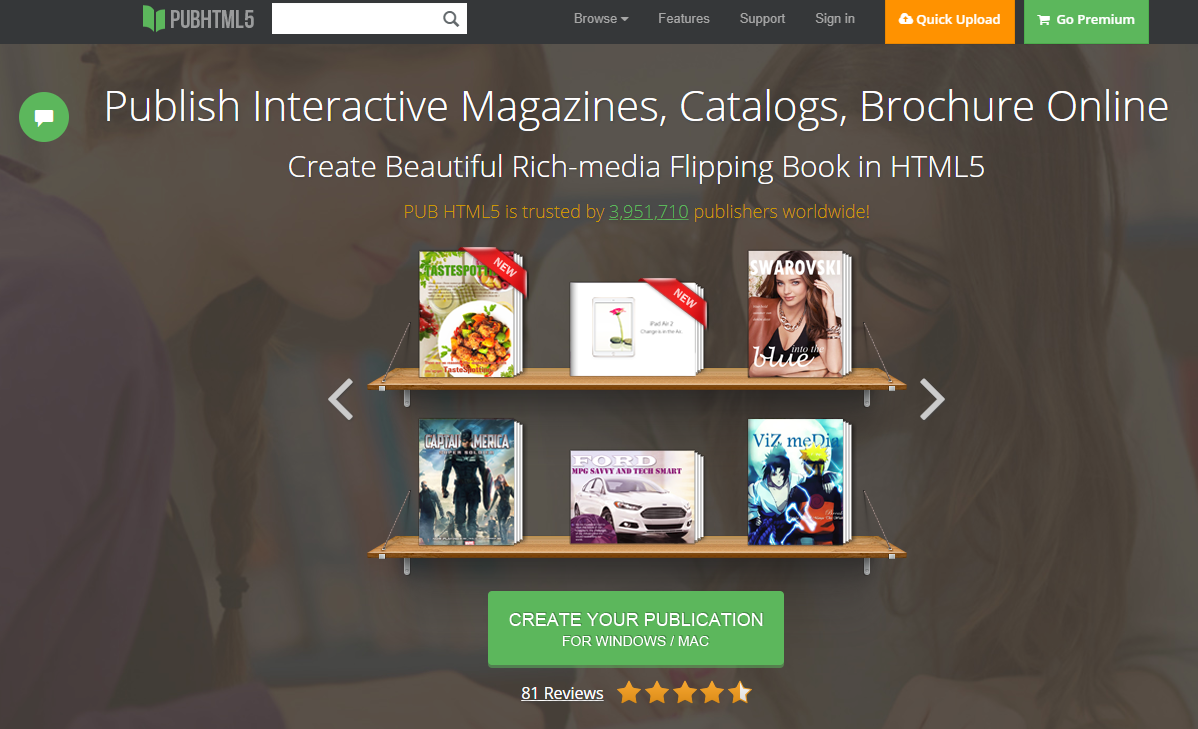
Turn your PDFs into interactive magazine-style flipbooks with Pub HTML5
- Issuu: You can create your digital magazine and start selling single issues or subscriptions using the Issuu digital publishing and Issue sales tools. Plans range from free to $35 per month.
- MagLoft: This software builds mobile apps for digital magazine publishers. You can upload your own PDFs or ePUBs and then use MagLoft’s drag-and-drop editor to create interactive content for your magazine. Best of all, your digital magazine is responsive, which means it adjusts to the device the reader is using, and that makes for an optimal reader experience. That means no excessive pinching and frustrating left-to-right scrolling to read your magazine. Plans range from free to $499 per month.
- Flipsnack: You can develop, share, and embed online magazines into your website and social media channels with Flipsnack. The professional plan also allows you to sell your magazine directly on the Flipsnack platform. Plans range from free to $79 per month.
- PressPad/Magz: Using your PDFs, this software creates mobile magazine apps for iOS and Android devices. Plans range from $84.99 to $299 per month

The Style to the Aisle digital magazine app was created using PressPad/Magz
Each of the software platforms listed above come with a free trial. As the features among the various digital magazine software vary greatly, it is highly recommended that you take full advantage of the trial period to test out the software before making a purchase decision.
4. How to Sell Your Digital Magazine
Where you can sell your magazine depends on your magazine’s format. Digital magazines can be created as simple PDFs, electronic publications―also known as an ePUBs, which is the format e-readers like iBooks and Kindle Reader use―or as HTML5 documents using software like Pub HTML5.
You can sell your digital magazine on your website, on a Shopify store, through GumRoad, SendOwl, or any other site that allows you to sell digital downloads.
Some digital magazine software platforms like FlipSnack also allow you to host and sell your magazine on their platform. You can also publish your magazine on online newsstand sites, including:
- Magzter: This site boasts having more than 12,000 online magazines for buyers to purchase.
- Zinio: Featuring more than 6,000 digital magazines, your digital magazine will be in good company with top magazines like Time, Sports Illustrated, and Better Fast Company.
- Readly: This site offers a unique selling model. Subscribers get unlimited access to more than 4,000 magazines on its website for $9 per month.
Another way to create your digital magazine is to develop an app. If you create an app for your magazine, you can sell your digital magazine on popular app sites like the Google Play Store or Apple’s App Store.
The beauty of selling your magazine directly on popular app stores is that you have access to huge audiences where your digital magazine can be discovered. The downside is the app-developing magazine software tends to cost more than epub magazine software. For example, for a web and mobile app plan from MagLoft, plans start at $299 per month. Professional custom app developers charge well into the thousands.
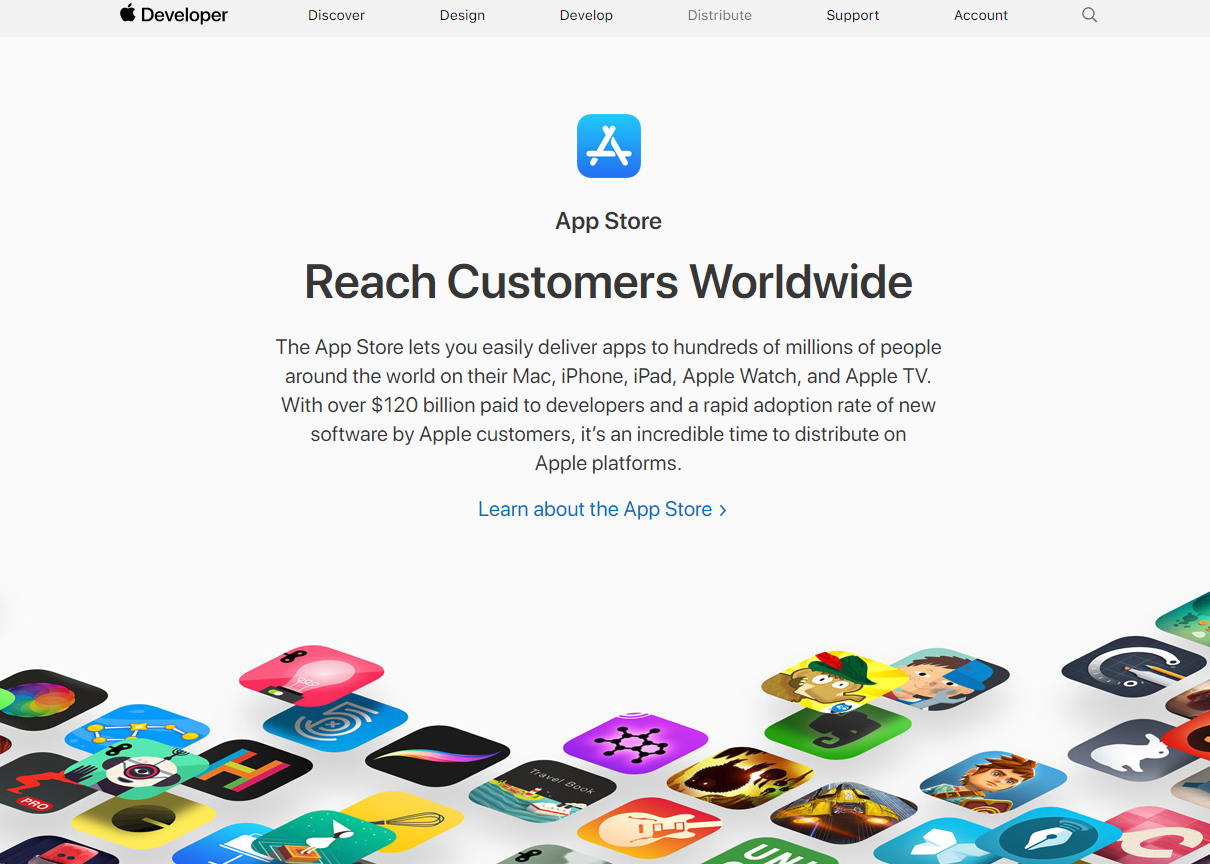
Create a magazine app and sell your digital magazine on popular app sites, such as Apple’s App Store
5. Design Your Online Magazine
A digital magazine has many of the same characteristics as a traditional magazine. You’ll need to design a masthead, which includes the title of your magazine along with any other information that you want to recur on each issue. Your magazine’s cover design will change from issue to issue, but certain elements such as typography, size of fonts, borders, colors, and so on will remain the same for continuity.
Your magazine will also need a logical and yet imaginative page layout that will also be partially modified and still show consistency across all issues. Last but certainly not least, the photography for your magazine needs to be powerful and compelling. The best print magazines on the planet are known for stunning photography. Magazine readers have come to expect amazing photographs from digital magazines too.

These Time covers illustrate how a magazine can vary cover elements while still maintaining a recognizable look and feel from issue to issue
Digital Publication Layout and Graphic Design
There are many graphic tools that you can use to design a stunning layout for your magazine. Adobe InDesign is the most popular layout software among graphic designers. If you’re looking for an easy-to-use design program, you can access Canva’s magazine cover templates with Canva’s paid plan, which costs $9.95 per month when paid annually. Additionally, many of the magazine software programs mentioned in Step 3 offer magazine layout and design tools to make sure your magazine is sharp.
Another popular resource for design help for do-it-yourself magazine publishers is Creative Market. There, you’ll find dozens of different magazine cover and layout templates you can purchase to create your own design.
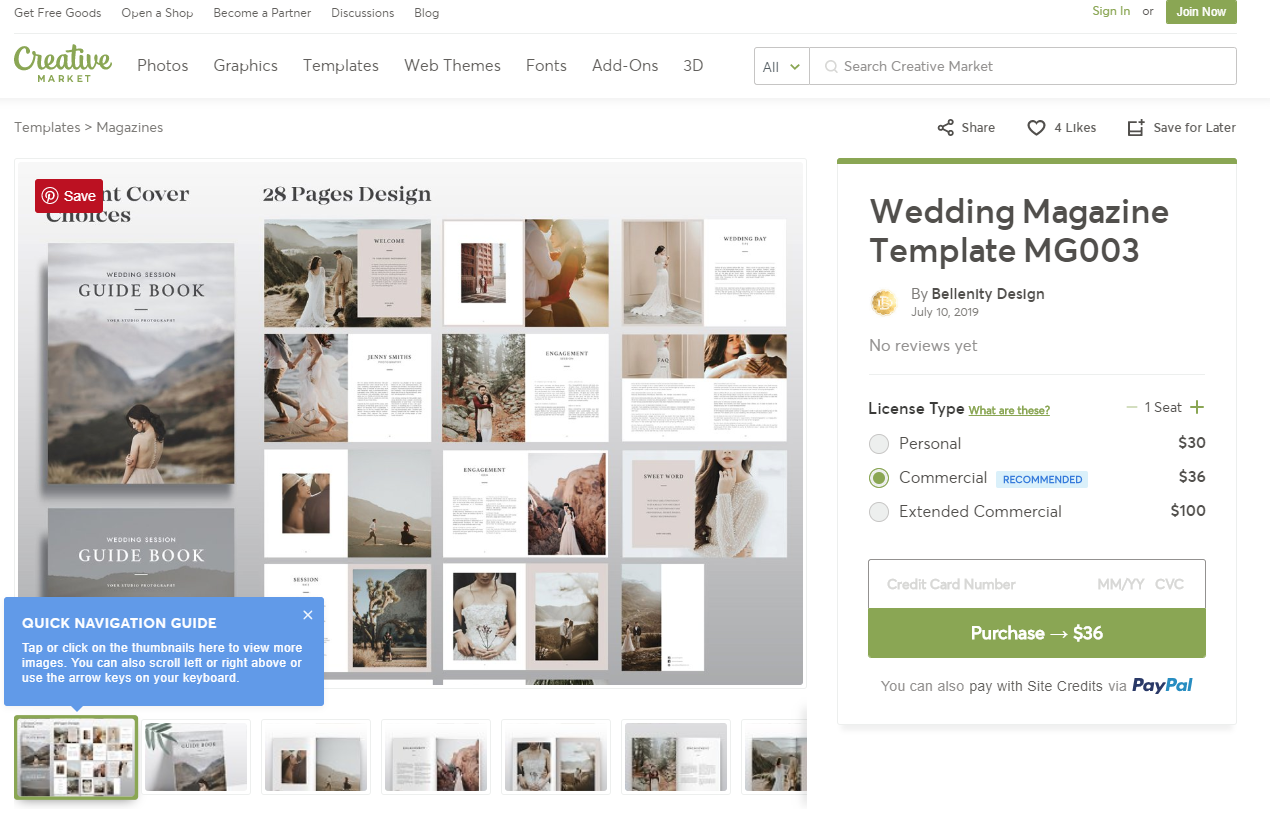
Example of a wedding magazine template designed by Bellenity Design as advertised on Creative Market
If there’s one area of your site not to skimp on it is on your magazine’s basic design. If you’re not a design professional, make sure you acquire professional design help to create the look and feel of your magazine. If you can’t afford a designer, you can purchase a ready-made magazine template to help you develop your digital magazine. Poorly designed magazines seldom turn into huge financial successes.
Digital Magazine Photography
There are many great sources for exceptional photography for your digital magazine. When paying for images or using free photos, make sure you understand the usage rights for those images. Also, double-check that the photos you choose can be placed on a magazine that’s being sold either by subscription or single issue, provided you’re charging for your magazine, and be transparent regarding any photo attribution notations that are required.
To protect yourself from costly legal nightmares, also verify that the images you’re using come from a source that has the rights to grant you usage privileges for the images you use. Sites like Pexels, Pixabay, and Unsplash have thousands of free images that might be perfect for your magazine. There have been instances reported where photos on free sites were posted without the owners’ consent. As a magazine publisher, you could be held liable for using any photo you did not have the right to publish.
If you need some help with the legal aspects of publishing a digital magazine, you may want to explore LegalZoom’s intellectual property services. LegalZoom can help you with magazine trademarks, copyright registration, and more. You can also speak with an attorney anytime you want through LegalZoom’s prepaid legal plans.

National Geographic magazine is known for its stunning photography
If your budget allows, consider purchasing royalty-free images from stock houses, such as BigStock, 123rf, Shutterstock, and Getty Images. These sites often have considerably higher quality images than you’ll find on free sites and usually have far more extensive photo collections. Also, when you purchase images on these sites, you have a third-party record that you paid for the right to use the images you are buying for publication.
Finally, if you have access to an exceptional photographer or if you are one, then original photos can set your digital magazine apart from others on the market. If you can’t find a local photographer that you want to work with, you can find photographers on freelance sites like Upwork and Fiverr. Another source for finding a photographer is Scoopshot, which is an online portal that matches photographers with clients needing photography services.
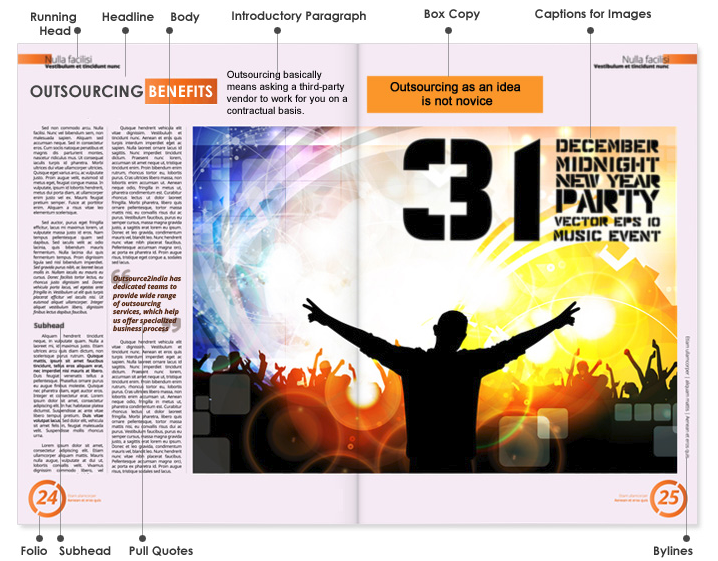
Example of a typical magazine page layout and common page elements from OutSource2India
Digital Publication Typography
Be selective when choosing typography for your magazine. Typography is an important design element that contributes significantly to the vibe your digital magazine exudes. If you’re not sure what to use, do some research. Review all types of magazines for the different fonts that are used as well as how type is used in headers, subheaders, call-out quotes, and so on. Choosing the right type combinations for your magazine should not be underestimated; typography has more influence on overall design look and feel of a magazine than most people understand.

Example of creative use of typography in Solitaire magazine designed by Natalie Shau
6. Create Content for Your Digital Magazine
The content for your magazine is what keeps readers coming back issue after issue. That’s why it’s important to be strategic with your content plan.
Most magazines include both in-depth featured content and shorter recurring content, such as a table of contents, letters to the editor, message from editor-in-chief, and various short-form columns targeting the magazine readers’ top interests. Note that for recurring content, magazines typically use a semi-standardized page design so that readers get familiar with these regular columns. Advertisements are generally spread throughout the magazine, though are less prevalent among the featured articles.
You need to create a plan for what content pieces you’ll add and where they’ll go in your magazine. For example, “front of the book” content is typically filled with short-form content, while the middle of the magazine, or “the feature well,” is where featured content for the issue is placed. The “back of the book” contains all the remaining information that a magazine publisher wants to include, but that is not considered top content. Advertisements here are typically cheaper and, hence, you’ll often see multiple small ads toward the back of the magazine.
Attracting Exceptional Writers for Your Online Magazine
If you’re thinking of launching a new magazine, you may already have access to some great writers in the niche you intend to pursue. If you’d like to expand your network of magazine writers, there are a handful of ways to do this.
Start following forums, blogs, and online articles by people who are addressing the types of issues you want to cover in your magazine. Reach out to anyone who you feel conveys the sentiments and perspectives you want to be shared in your magazine and invite these people to become either paid or guest contributors to your magazine.
You can also find terrific writers and editors on freelance sites like Upwork, Freelancer.com, and Fiverr. You can direct freelancers on the topics you want to be covered, the tone you want, and any other specifics you feel are needed to ensure the freelancer’s writing aligns with your magazine’s voice. Best of all, when working with freelancers, you don’t have to enter into long-term agreements. You can test writers’ skills and decide if you want to continue working with them for future issues.
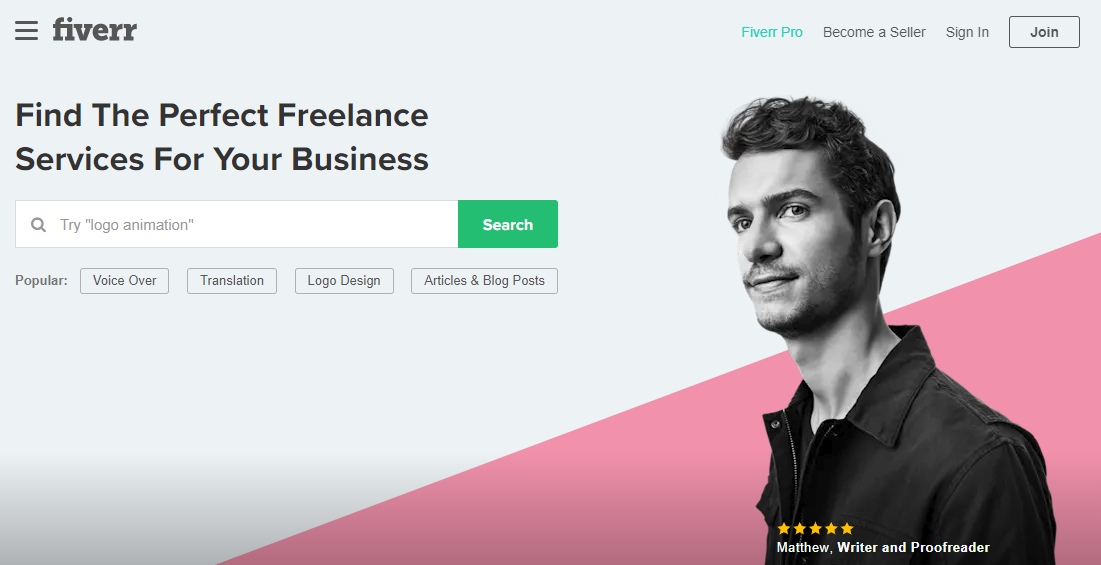
Fiverr gives you access to hundreds of freelance writers, editors, proofreaders, and more
Landing Interviews for Your Digital Magazine
You’ve probably noticed that many magazines feature famous people on their magazine covers. Big names sell magazines. While you might not be able to land interviews with Oprah Winfrey or Elon Musk when you’re just starting out, that doesn’t mean you can’t go after an interview with a recognizable name for your audience.
Any person who has a new book or business venture to promote is a prime prospect for an interview. When approaching people for interviews, offer several different interview formats from which to choose. For example, you could do a live interview via Zoom, or chat on the telephone, or even conduct an email interview where you send the interviewee a dozen or so questions to answer at his or her leisure. Make it easy for people to say yes to you.
Another significant advantage of landing interviews with famous-to-your-niche people is that the people you interview typically have sizeable followings. When someone with a big audience mentions that he or she interviewed with you, that’s free publicity for your magazine.
The more great interviews that you land, the more people will seek you out to be interviewed. Interviews are a terrific way to gain credibility and grow interest in your digital magazine.

This issue of The City Magazine features an interview with Leonardo DiCaprio to gain interest for its magazine
7. Market Your Digital Magazine
As the publisher for your magazine, the responsibility for its success rests squarely on your shoulders. Don’t assume “if you build it, they will come.” You must market your magazine proactively and be relentless when it comes to attracting readers.
Building an Audience
You’re reading this article because you wanted to know how to create a digital magazine. This post has already walked through the how to’s of creating a magazine, but the seventh step, marketing your digital magazine, is perhaps the most critical step of all. After all, if no one’s reading your magazine, your publication will not be successful.
Here are the top ways most magazines build and sustain a following:
- Offer free samples: Create a premiere edition of your magazine and offer it for free on every channel possible like social media, ads, on your website, and so on. In exchange for receiving the free issue, request an email address so you can follow up with readers and invite them to become regular subscribers.
- Create a website: Most successful digital magazines have a website where people can explore what the magazine is all about as well as subscribe to the magazine. When you do a great job of search engine optimization (SEO) on your website, more people will discover your publication through Google. You can launch a magazine website on WordPress with DreamHost as your hosting provider for only $2.59 per month
- Do a social media blitz: Be unwavering in your commitment to creating and posting compelling social media content that promotes your magazine and introduces people to the new content in each edition.
- Guest blogging and guest podcast appearances: As a magazine publisher, you have a unique perspective to share with the world. Offer to write guest posts on popular blogs or appear as a guest on podcasts that have big audiences. This will help you to get the word out about your new magazine.
- Press releases: New magazine startups are news, so announce your magazine launch through press releases. Use a service like Newswire to get your releases out to as many outlets as possible.
- Advertising: Create niche-targeted advertisements for your magazine on Google Ads or appropriate social media sites.
- Create share-worthy content: The best way to get the word out about your new magazine is to create share-worthy content that has the potential to go viral. Remember that the most-shared content is often visual or interactive, so be sure to create infographics, illustrations, and quizzes that share-worthy.
- Invite readers to engage: Getting people to read all or part of an issue of your magazine is only half the battle. You want them to come back again and again, and even better, tell their friends about the magazine. The best way to make this happen is to engage them through interactive chats and participation pieces within your magazine.
The more you get people to interact with you on multiple channels, the more committed they will be to your magazine. Building an audience takes time, but your magazine will not thrive unless you devote adequate attention to this critical task.
“Build an authentic relationship with your readership. Reply to emails, ask for suggestions, and feature their comments in your social media. Your first readers need to feel like they are part of the family so that they can become your ambassadors.”
―Anne-Laure Le Cunff, Founder, Maker Mag
Frequently Asked Questions (FAQs) About How to Create a Digital Magazine
If you still have questions about how to create a digital magazine, take a glimpse at the questions below to see if your top questions are represented.
How do digital magazines make money?
The three most common ways digital magazines make money is through subscription sales, advertising, and sponsored posts. In most instances, the larger the subscriber base, the more money a digital magazine can make.
How can I make a magazine at home?
You can create a digital magazine from home using any of the magazine software tools discussed in Step 3. The most budget-friendly are Pub HTML5, Issuu, and FlipSnack. In most cases, you will start with a PDF, then upload it to the software platform of your choice to add interactivity, videos, and more.
How many pages should a digital publication have?
Unlike print magazines, digital magazines have greater latitude when it comes to length because they don’t have print dimension and print cost restraints. Most magazines range from 30 to 120 pages. Your digital magazine should be as long as you feel it needs to be to achieve your goals.
Do I need to trademark my digital magazine?
It’s essential to make sure you’re not violating anyone else’s trademark when naming and designing your magazine. You can search the United States Patent and Trademark Office (USPTO) trademark database for free. If your goal is to monetize your magazine, getting a trademark for your magazine is a wise move. LegalZoom makes it easy to trademark your magazine.
Bottom Line
There are just seven steps to creating a digital magazine for less than $200. You start with a clear business plan and a talented team. Then, choose your publishing format and magazine software. Next, you’ll create your sales, design, and content strategies. The final step is building a loyal audience through smart marketing tactics.
This guide explained how to create a digital magazine but, as mentioned throughout the article, you’ll need help. Fiverr offers all types of freelance services that can help you with magazine design, photography, article writing, advertising, copyediting, and more.
 “My best advice for anyone who wants to start a digital magazine is to make sure you are fully capitalized, such as at least six months of expenses in the bank. It’s a marathon and not a sprint, and it’s hard to monetize a magazine based off of [Google Ads] and sponsored posts. The six-month runway will allow you to get your bearings while working out the kinks as you grow your audience.”
“My best advice for anyone who wants to start a digital magazine is to make sure you are fully capitalized, such as at least six months of expenses in the bank. It’s a marathon and not a sprint, and it’s hard to monetize a magazine based off of [Google Ads] and sponsored posts. The six-month runway will allow you to get your bearings while working out the kinks as you grow your audience.” “Build an authentic relationship with your readership. Reply to emails, ask for suggestions, and feature their comments in your social media. Your first readers need to feel like they are part of the family so that they can become your ambassadors.”
“Build an authentic relationship with your readership. Reply to emails, ask for suggestions, and feature their comments in your social media. Your first readers need to feel like they are part of the family so that they can become your ambassadors.”